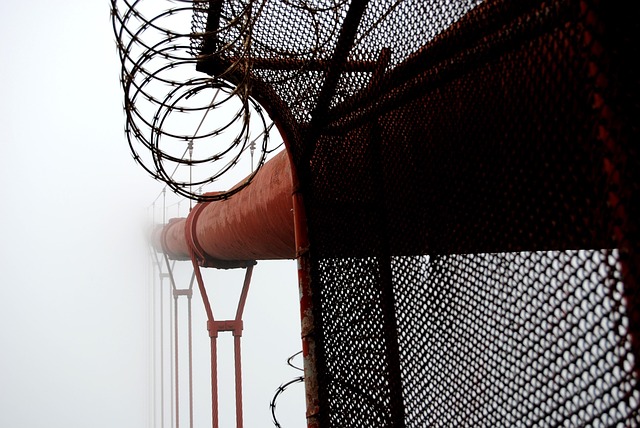Selling a fire-damaged house in California requires prompt professional mitigation for optimal appeal. This includes immediate water source control, specialized equipment for moisture extraction and drying, addressing structural and health concerns, and strategic dehumidification. Homeowners must decide between restoration or replacement, navigating legalities, building codes, insurance, and financial complexities while prioritizing transparency to buyers through accurate assessments, marketing, and communication.
Water damage mitigation is crucial for preserving properties and minimizing financial losses. In this comprehensive guide, we explore essential strategies for dealing with water-related disasters. From understanding the basics of mitigation to assessing and containing initial steps after flooding, we cover all you need to know. We delve into effective dehumidification techniques, guiding you through restoration vs. replacement decisions. Additionally, we address legal and financial aspects of selling a fire-damaged house in California, providing expert tips for successful marketing and property sales.
- Understanding Water Damage Mitigation: The Basics
- Assess and Contain: Initial Steps After Flooding
- Dry Out the Property: Effective Dehumidification Techniques
- Restoration vs. Replacement: Deciding What to Keep
- Legal and Financial Considerations for Selling a Fire-Damaged House in California
- Expert Tips for Marketing and Selling Your Property
Understanding Water Damage Mitigation: The Basics

Water damage mitigation is a crucial process for any homeowner, especially in regions prone to flooding or heavy rainfall like California. When water invades your home, quick action is essential to minimize losses and prevent further damage. The first step is to stop the water source, whether it’s a burst pipe, leaky roof, or flooding from a nearby river. This immediate response is critical as every hour counts in water damage restoration.
In the case of a sell fire damaged house California, understanding water mitigation basics becomes even more vital. Water can exacerbate existing issues like smoke and soot damage, causing mold growth and structural weaknesses. Professional mitigation services employ advanced equipment to extract moisture, dry out affected areas, and prevent water from seeping into hidden spaces. This meticulous process ensures that your home is not just restored but also safely prepared for potential future challenges.
Assess and Contain: Initial Steps After Flooding

When a flood occurs in your California home, the initial steps are crucial for effective water damage mitigation. The first step is to assess the situation: locate and identify the source of flooding, estimate the extent of damage, and ensure everyone’s safety. Once you have a clear understanding of the scope, it’s time to contain the water to prevent further damage. Turn off the main electricity supply if safe to do so, as electrical components can be a hazard in standing water. Use sandbags or temporary barriers to stop water from entering nearby rooms or structures, and if possible, shut off gas supplies too.
These initial steps are vital to avoid not just structural damage but also health hazards that can arise from floodwaters, which may contain contaminants and bacteria. Quick action during this phase sets the foundation for a more efficient restoration process, ensuring your sell fire damaged house California efforts are effective and successful.
Dry Out the Property: Effective Dehumidification Techniques

After a water damage incident, drying out the property is crucial for mitigating further harm and ensuring a swift recovery. In California, where fires are a recurring concern, proper dehumidification techniques become even more vital to prevent structural damage and promote a healthier environment for potential future occupants when selling a fire-damaged house.
Implementing effective strategies such as using high-capacity dehumidifiers, increasing airflow through fans, and addressing any sources of moisture is essential. These measures help reduce humidity levels, preventing the growth of mold and mildew, which can significantly impact air quality and the overall condition of the property. Additionally, ensuring proper ventilation in hard-to-reach areas, like attics and crawl spaces, aids in drying out these often overlooked yet critical components of a home’s structure.
Restoration vs. Replacement: Deciding What to Keep

When facing water damage, especially after a disaster like a flood or burst pipes, homeowners often grapple with restoration versus replacement decisions. In the case of a sell fire damaged house California, understanding what to keep and what to replace is crucial.
Restoration aims to revive and return affected areas to their pre-damaged condition, preserving cherished belongings and structural integrity. This could involve water extraction, drying processes, and repairing or replacing damaged items like drywall, flooring, and fixtures. On the other hand, replacement focuses on completely removing and substituting damaged materials, ensuring a fresh start. It’s particularly relevant when extensive damage has occurred or if the cost of restoration exceeds the value of the property. Homeowners should carefully assess each area, considering both sentimental value and practical considerations to make informed decisions that align with their goals, whether it’s rebuilding and selling or starting anew.
Legal and Financial Considerations for Selling a Fire-Damaged House in California

Selling a fire-damaged house in California involves more than just repairing the physical structure; it comes with legal and financial considerations that homeowners often underestimate. The first step is understanding the scope of damage and its impact on the property’s value. In California, real estate market trends can vary greatly depending on location, so assessing the potential loss accurately is crucial. Homeowners may need to consult with a professional appraiser or insurance adjuster to determine the repair costs and the current market value of their property.
Once the damage assessment is complete, homeowners must consider the legal aspects. California has strict building codes and safety regulations, and fire-damaged properties often require specialized inspections to ensure compliance. Sellers are responsible for disclosing any known defects or damage to potential buyers, so transparency is key. Additionally, financial considerations include settling with insurance providers, managing reconstruction costs, and potentially facing legal claims from tenants or mortgage lenders if the property was rented. Proper documentation and communication throughout the process are essential to mitigate these risks when selling a fire-damaged house in California.
Expert Tips for Marketing and Selling Your Property

When selling a fire-damaged house in California, prompt action is key to mitigating water damage and enhancing your property’s appeal. The first step is to assess the extent of the damage caused by both the fire and subsequent water usage for extinguishing. Engage professionals who specialize in fire and water damage restoration to inspect and evaluate the property. Their expertise ensures a thorough understanding of the issues and the most effective solutions, which can be crucial factors when marketing your home.
Effective marketing strategies should emphasize the steps taken to restore the property, highlighting the professional services employed and the quality of repairs. Documenting the restoration process through before-and-after photos or videos can provide tangible evidence of the work done. Additionally, transparent communication about the fire and water damage history builds trust with potential buyers, ensuring a smooth selling experience in California’s competitive real estate market.
Water damage mitigation is a complex process that requires a systematic approach. From initial assessment and containment to effective dehumidification and wise decision-making regarding restoration versus replacement, each step is crucial in minimizing losses and maximizing property value. For those looking to sell a fire-damaged house in California, understanding legal and financial considerations is essential. With expert tips on marketing and selling, homeowners can navigate this challenging process successfully, ensuring a smooth transition and potentially attracting the right buyers for their unique situation.






